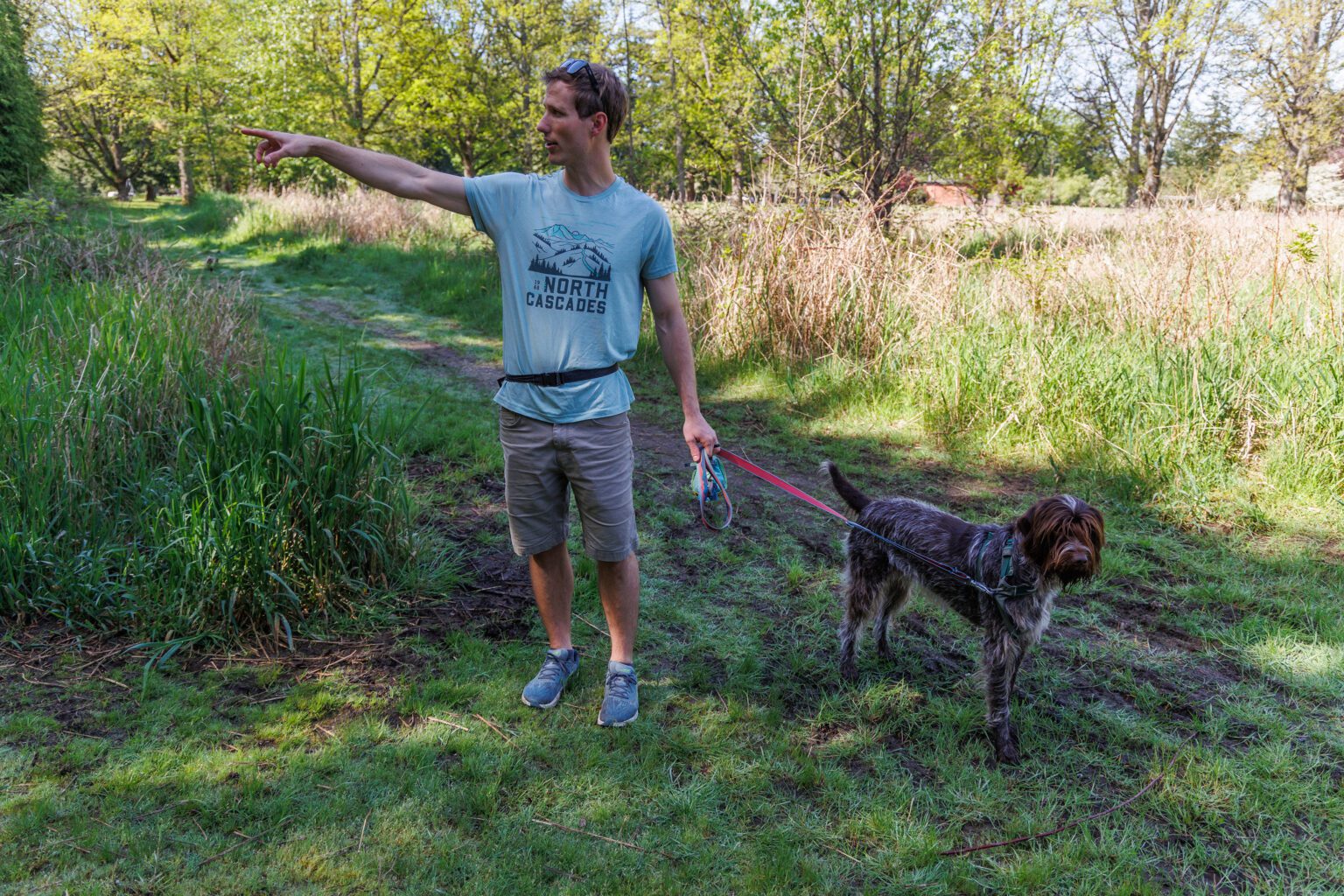As the days grow longer and the weather gets warmer, Whatcom residents should expect to see more wild animals shifting from winter behavior to protecting their young and eating whatever they can find.
Reports of coyotes, deer, cougars and even bears have circulated on social media, though the likelihood of spotting a cougar strolling through downtown Bellingham remains pretty low.
Coyote sightings are more common, though, particularly around Whatcom Falls Park, where families often walk with their small children and pets.
“About a month ago, I was in Whatcom Falls Park with my partner, my baby and my dog, and there was a coyote behind us on the gravel trail,” said Bellingham resident Mike Knape, who experienced several close encounters with the animals. “It was a cool nature moment at first, because we don’t normally see them, but it was a little spooky.”
Knape said the coyote followed the group down the path for about 150 yards before turning off into the trees.
That behavior, known as “escorting,” is normal for coyotes, especially during the spring season when coyotes are rearing their young, said Chase Gunnell, who manages the Washington Department of Fish and Wildlife’s (WFDW) communications for the Puget Sound Region.
Coyotes are known as a “monoestrous” species, meaning they have just one breeding season each year. Coyote puppies — born both blind and deaf — are typically born between mid-April and early May.
Knape returned to the off-leash section of the park with his almost 2-year-old wirehaired pointing griffon, Waffle, about a week after they first spotted the coyotes.
“Waffle ran ahead of me and started barking at a coyote maybe 15 yards ahead of her,” Knape said. “That coyote moved away and Waffle started following it, but then another coyote came out of the woods and chased my dog.”
Knape said the incident happened fast, and Waffle “bolted” out of the park, away from the coyote pair. Knape was able to find Waffle in the nearby cemetery. He checked her for bites or scratches, and determined she was physically unharmed, but “really freaked out.”
“I’ve seen coyotes in the neighborhood before, but always in passing,” Knape said in mid-May, about a month after the incident. “But they’ve been making themselves known, coming out onto the trails and watching people, which seems like unusual behavior.”
New signs installed by the City of Bellingham warn Whatcom Falls visitors that coyotes may be minding their newborns this time of year, and to be cautious with pets in the area. Though larger dogs — like Waffle, who is about 72 pounds — may be OK, smaller dogs are at higher risk of danger.

“Coyote sightings are a good reminder to keep a close eye on children, chickens and other domestic animals, and small pets or to keep them inside or in an outbuilding if unsupervised,” Gunnell said. “To minimize the risk, keep cats inside, keep dogs leashed, avoid early morning and late evening walks with your pet in areas where coyotes are known to be, and generally keep an eye on children and pets.”
Other wildlife are also going through reproductive seasons, and newborn deer have been spotted in unusual spots around Whatcom County.
Though it may be tempting to try to feed deer and other animals, like raccoons, it is illegal in Bellingham city limits.
An ordinance passed by the Bellingham City Council in 2017 prohibited the intentional feeding of deer and raccoons in city limits. Unintentional feeding — through bird feeders, planted fruits and vegetables or food placed to feed domesticated, outdoor pets — is allowed, but wildlife experts indicate it can lead to health problems for the animals.
What to do if you spot a wild animal
In almost all scenarios, it’s best to just leave the animal alone.
Lone fawns, for instance, are not abandoned by their mother. Adult deer will often “park” their babies in safe areas and go off to forage while keeping predators at a distance.
If you come across a coyote, the WDFW said you should never run away from it. Instead, the department recommends making loud noises, waving sticks, shouting at the animal or throwing something at it.
If you see an injured animal, contact the Whatcom Humane Society Wildlife Rehabilitation Center at 360-966-8845.
If you have a wildlife emergency, contact the WDFW Dispatch Center at 360-902-2936 or enforcement-web@dfw.wa.gov.




